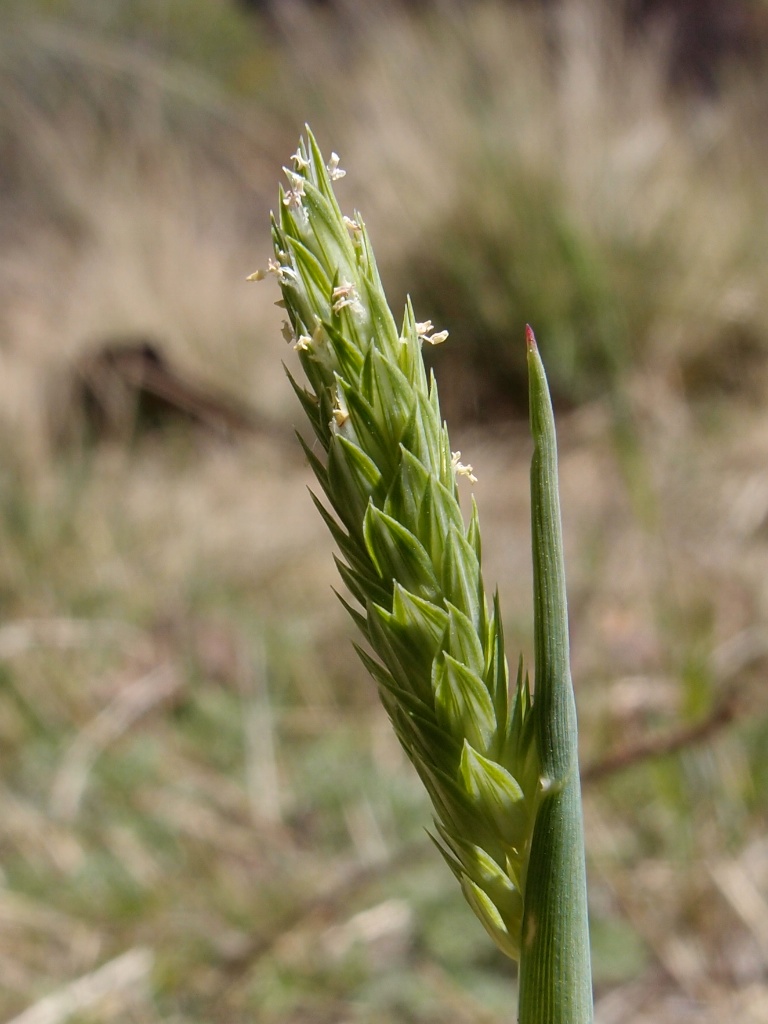Phalaris
|
Family: Poaceae |
Plants annual or perennial; cespitose or not, sometimes rhizomatous. Culms 4-230 cm tall, sometimes swollen at the base, not branching above the base. Leaves more or less evenly distributed, glabrous; sheaths open for most of their length, uppermost sheaths often somewhat inflated; auricles absent; ligules hyaline, truncate to acuminate, entire or lacerate, glabrous; blades usually flat, sometimes revolute. Inflorescences terminal panicles, sometimes spikelike, ovoid to cylindrical, dense, sometimes interrupted, with 10-200 spikelets borne singly or in clusters, the spikelets homogamous in species with single spikelets, heterogamous in species with the spikelets in clusters, the lower spikelets in the clusters staminate (rarely sterile), the terminal spikelets bisexual or pistillate. Spikelets pedicellate, homomorphic, laterally compressed, with 1-3(4) florets, only the terminal (or only) floret reproductively functional, the lower floret(s), if present, sterile; disarticulation in species with single spikelets above the glumes, the florets falling together or, in species with clustered spikelets, usually at the base of the spikelet clusters, sometimes beneath the bisexual or pistillate spikelets. Glumes equal or almost so, exceeding the florets, 1-5-veined, keeled, keels often conspicuously winged; lower (sterile) florets reduced, varying from knoblike projections on the calluses of the terminal florets to linear or lanceolate lemmas less than 3/4 as long as the terminal florets; terminal florets usually bisexual, pistillate, or staminate, rarely sterile, in the lower spikelets of a spikelet cluster; lemmas of terminal florets coriaceous to indurate, shiny, glabrous or pubescent, inconspicuously 5-veined, acute to acuminate or beaked, unawned; paleas similar to the lemmas in length and texture, enclosed by the lemmas at maturity, 1-veined, mostly glabrous, veins shortly hairy; lodicules absent or 2 and reduced; anthers 3; ovaries glabrous; styles 2, plumose. Caryopses with a reticulate pericarp, falling free of the lemma and palea; hila long-linear. x = 6, 7. The name of the genus is an old Greek name for a grass. Spikelets articulated above the glumes, with 1 perfect terminal fl and 1 or (in our spp.) 2 much smaller linear sterile lemmas below it; glumes subequal, compressed and keeled, often winged along the keel, the lateral veins usually stronger than the midvein; lemmas awnless, shorter than the glumes, the fertile one firm or coriaceous and often shining; ligules membranous, usually large; panicle dense or spike-like, with medium-sized to large spikelets. 15, cosmop., mainly temp. Gleason, Henry A. & Cronquist, Arthur J. 1991. Manual of vascular plants of northeastern United States and adjacent Canada. lxxv + 910 pp. ©The New York Botanical Garden. All rights reserved. Used by permission. |

